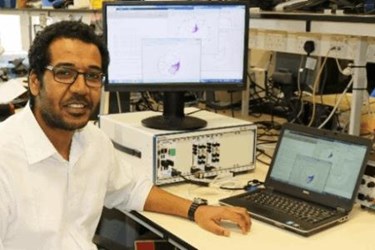Bristol Researchers Create New RF Design Tool For 5G Devices
By Jof Enriquez,
Follow me on Twitter @jofenriq

Researchers at the University of Bristol have developed a novel radio frequency (RF) design tool that will help engineers design and build tuneable wireless devices capable of operating over multiple frequencies in 5G networks anywhere in the world.
“For smartphones to operate globally, phones need to tune or switch bands, ideally without compromising performance. Such frequency agility poses tough design challenges due to the increased complexity and physical size of the tuneable system. At Bristol, we have developed a novel radio frequency (RF) design methodology that will ensure the efficient design of tuneable wireless devices,” said Dr. Eyad Arabi, Research Associate in the university's Department of Electrical and Electronic Engineering, in a news release.
Working with engineers from the University of Sheffield, and under the Frequency Agile RADio (FARAD) project funded by the British Engineering and Physical Sciences Research Council (EPSRC), the Bristol team led by Arabi sought to determine for the first time the coverage areas of tuneable matching networks (MNs), which are considered essential in smart or agile systems for 5G wireless networks – the next generation of mobile technology.
Based on their research published in the journal IEEE Transactions on Microwave Theory and Techniques (T-MTT), the team discovered that the coverage area is encompassed by up to five arcs, from whose centers and radii they derived analytical formulas.
“The theoretical analysis is provided for four typical MNs and verified by circuit simulation and measured data,” the researchers wrote in the paper. “Moreover, a dynamically load-modulated power amplifier has been designed using the presented theoretical techniques, which demonstrates a measured improvement in the power added efficiency of up to 5% in the frequency range of (0.8-0.9) GHz.”
Dr. Kevin Morris, Reader in Radio Frequency Engineering and Head of the Department of Electrical and Electronic Engineering, added: “This work allows flexibility to be brought into the design process which will significantly increase the ability of future 5G amplifiers to work over multiple frequency ranges and lead to a single handset that could be used around the world.”
“Bristol’s new tool will allow the designer to visualise the tuning range or coverage of the tuneable components, speeding up the design of antennas, filters and amplifiers used in smartphones,” said Mark Beach, Professor of Radio Systems Engineering in the Department of Electrical and Electronic Engineering.
Beach and colleagues at the University of Bristol also are involved in the mmMAGIC project, an academe-industry collaboration seeking to develop millimeter wave technologies to be deployed in 5G mobile radio access technology (RAT) networks operating in the 6-100 GHz range.
In 2016, they conducted a massive MIMO (multiple input, multiple output) demonstration that achieved an unprecedented bandwidth efficiency of 79.4bit/s/Hz, which equates to a sum rate throughput of 1.59Gbit/s in a 20MHz channel. Latest trials in 2017 are conducted at the BT Labs in Adastral Park, Suffolk, England.
